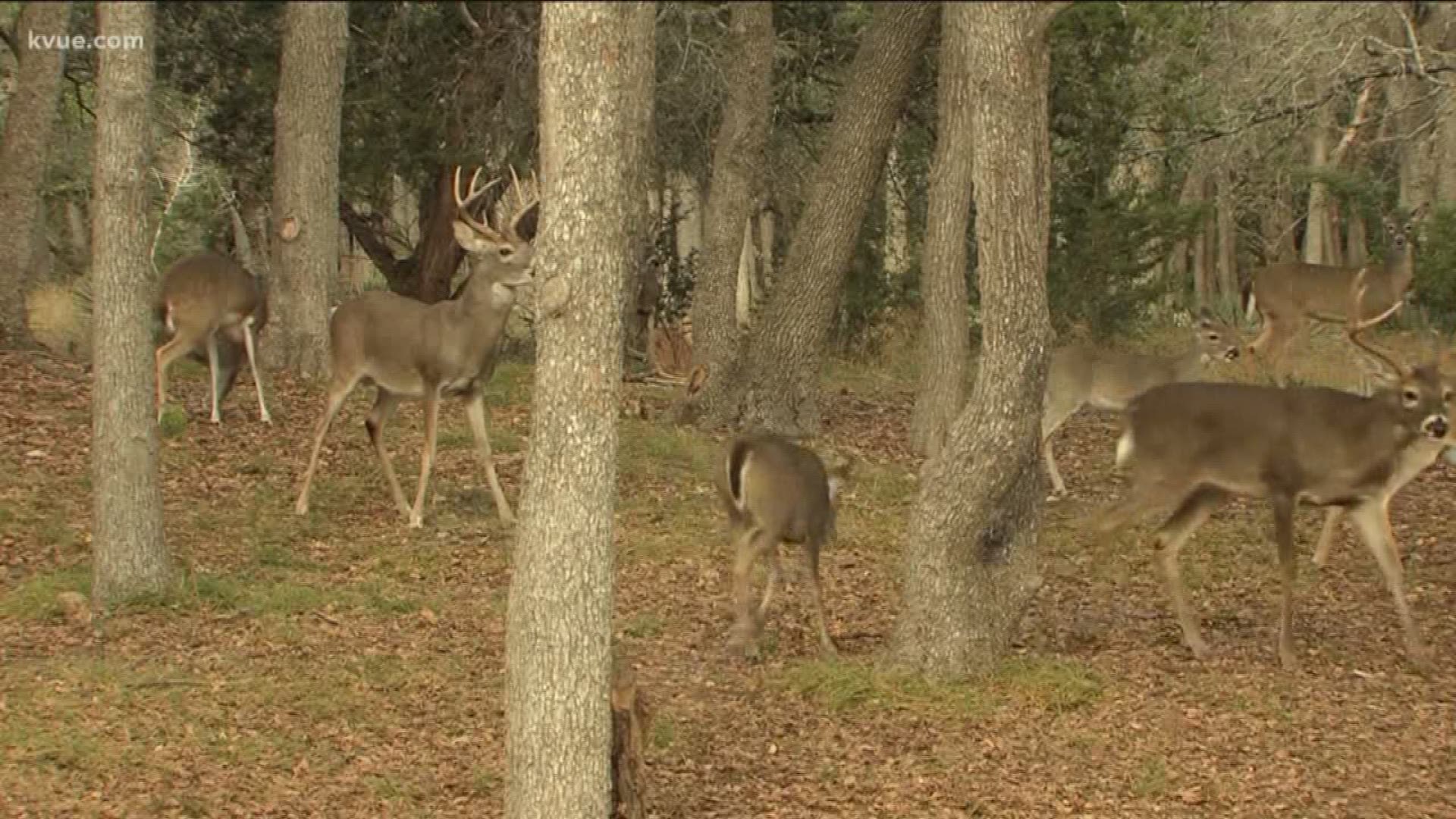TEXAS — Hunters and landowners are being asked to be on the look-out after the Texas Parks and Wildlife Department confirmed chronic wasting disease in two types of deer across several Texas counties.
Chronic wasting disease (CWD) is a neurological disease in deer, elk, moose and other members of the deer family.
The disease was discovered in three white-tailed deer in Medina, Dallam, and Hartley counties, and in three mule deer in Hudspeth, Hartley, and El Paso counties, TPWD said in a press release dated Jan. 4. Each of those counties have had previous cases of the disease.
Clayton Wolf, Wildlife Division Director for TPWD, said currently there are 139 CWD positive animals throughout the state. The vast majority of those positive samples came from captive deer breeding facilities in South-Central Texas, but that they have also found it in elk, white-tailed deer and in mule deer in the Panhandle and other parts of West Texas, Wolf said.
"Although we have those positives in Texas, we've been monitoring all throughout Texas and have not found it in the majority of the state, so that's the way we want to keep it," said Wolf. "It's important to monitor it so, we don't inadvertently move the disease load a deer up on a trailer, move it somewhere else and put it in your backyard."
RELATED:
The department said aggressive detection, sampling and herd management are crucial in making sure chronic wasting disease doesn't spread. Wolf explained that the disease can be spread from animal to animal through body fluids, traces of which are left behind in the soil.
"The alarming thing about CWD is that it apparently can be contracted by environmental contamination," Wolf said. "Once a site has had a deer with chronic wasting disease on it, they are shedding those prions, that infectious agent, it can be found in the soil."
At this time, there is no research that indicates that CWD is transmissible to humans. The deadly disease can attack any deer, but is typically found in older males.
Some symptoms of CWD include:
- Deer acting noticeably lethargic or weak
- Excessive drooling
- The deer's legs being spread out into a saw horse stance
Wolf said that whether you're a hunter, rancher or just someone who enjoys the outdoors, this is something to bring awareness to.
"Whether you're a landowner, you're a deer hunter, you're someone who just enjoys viewing wildlife," said Wolf. "White-tailed deer, mule deer are part of our natural heritage we enjoy, everyone enjoys wildlife, and this - there's no cure for this disease. It's important that we do everything we can to keep the disease from spreading throughout Texas."
Hunters who kill mule deer, white-tailed deer, elk, red deer, or sika deer within the Trans-Pecos, Panhandle, and South-Central Texas CWD Containment and Surveillance Zones are required to bring their animals to a TPWD check station within 48 hours, the department said. TPWD collects samples from about 10,000 hunter-harvested or road kill annually.
If you notice a deer exhibiting symptoms of CWD, you are asked to contact a TPWD biologist or game warden immediately to prevent it from spreading further.

